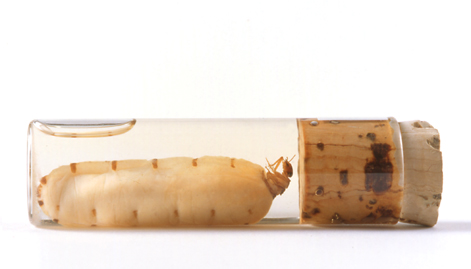Isoptera - The Termites
The marvelous and highly social termites evolved from cockroaches some 220 million years ago, during the early Mesozoic or late Paleozoic. This close relationship with roaches can be seen through the comparison of the primitive Australian Darwin Termite and the colonial Wood-eating Cockroachs (Cryptocercidae). Wood-eating Cockroachs live in galleries they excavates in rotten logs and share many things in common with the Darwin Termite. Similar features include; the structure of the wings, genitalia and jaws; the arrangement of eggs when laid; and the presence of symbiotic protozoa in their guts which enables them to digest the cellulose in wood. Termites are the only insects with a general ability to digest cellulose; the main chemical constituent of plants but also the most difficult to digest. Termites have been able to do this by entering into symbiotic relationships with ancient forms of life. There are about 2,230 described species of termites, all living a variety of lifestyles adapted to consume cellulose with the aid of protists, bacteria and fungus. Truth is stranger than fiction in the realm of the termite. True, some are capable of damaging wooden structures if the conditions are right, but many prefer to live elsewhere and instead create some of the most amazing examples of non-human architecture on Earth. Found on the savannas of Africa, there are mounds that rise up as tall as 7.5m (25’), the human equivalent of which has yet to be constructed. Well known for their engineering capabilities, termites fashion structures of profound complexity. It is still not known how they can do this. Some termites are colored various shades of brown but many, adapted to a subterranean life, have pale, transparent bodies. This, coupled with their frequent habit of living in the earth, earned them the archaic name “white ant”. Termite colonies are all uniformly hierarchical: a queen, with her diminutive king, “rules” over a population that is mostly workers. The workers are guarded over by a soldier caste that is unable to feed itself and is therefore dependent on the workers in turn. Species reproduction is carried out by the queen who will occasionally create a batch of sexual alates. The word Isoptera is derived from the Greek words for "equal-wing", making reference to the winged males and females which emerge at certain times of the year for their nuptial flights. After flying a distance from their old colonies, they shed their wings, pair off and set up new colonies.

